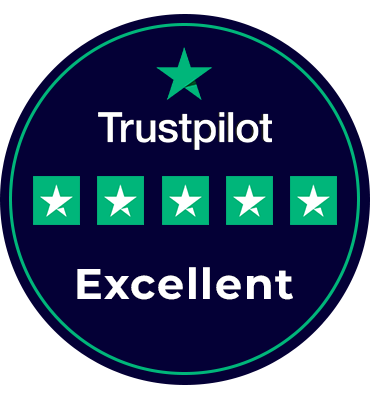Software Migration for Business Success
Shyam Singh
Last Updated on: 30 April 2025
Software Migration: A Critical Necessity for Businesses
Software migration is no longer a luxury but a critical necessity for businesses striving to stay competitive in today’s fast-paced digital landscape. Whether you’re moving from an outdated legacy system to cloud-based platforms, integrating cutting-edge software migration tools, or optimising workflows through new technologies, the migration process can seem daunting yet incredibly rewarding.
This article provides a step-by-step guide to software migration, including its importance, benefits, and common mistakes to avoid. We’ll also share expert insights and practical tips to ensure a seamless migration experience.
What is Software Migration?
Simply put, software migration refers to the process of transferring data, configuration, and functionalities from one system or platform to another. It can involve several types of migrations, such as moving on-premises solutions to cloud-based systems, evolving from proprietary software to open-source, or even transitioning to a completely new tech stack.
For enterprises, software migration goes beyond a technical upgrade. It equips organisations with modern tools designed to improve efficiency, scalability, and security, allowing them to future-proof their business operations.
Common Types of Software Migration
Cloud Migration
Transferring software and data from on-premise infrastructure to cloud services.
Database Migration
Shifting data between different database systems or formats.
Application Migration
Porting an application to a new computing environment.
System Migration
Transitioning entire operating systems to newer versions or platforms.
Why is Software Migration Important?
Software systems today must evolve with changing business demands. Holding onto outdated systems can result in inefficiencies, higher costs, and vulnerabilities. Here's why organisations prioritise software migration:
Improved Performance
Modern platforms are faster, more robust, and optimised for higher operational efficiency.
Enhanced Security
Upgrading systems helps mitigate risks associated with older, unsupported software that is prone to cyber threats.
Scalability
Migrated platforms can adapt as your business grows, ensuring seamless operations even with increased demands.
Cost Efficiency
While the initial cost of migration may seem substantial, the long-term savings—thanks to automation and better tools—outweigh the expenses.
Access to Innovation
Evolving systems make it possible to leverage the latest technologies such as AI, ML, and automation for better decision-making and operational improvements.
Key Benefits of Software Migration
Transitioning software systems can revolutionise how businesses operate. Here are some notable advantages:
Integrate New Features
Access enhanced features and capabilities that elevate your organisation’s offerings.
Collaborate Efficiently
Boost teamwork through systems that support seamless integrations and remote work capabilities.
Lower Maintenance Costs
Reduce redundancies in old systems that demand high maintenance efforts and budgets.
Real-Time Insights
Improved data accessibility and analysis provide businesses with actionable insights.
Challenges and Pitfalls of Software Migration
Despite its benefits, a poorly planned migration comes with risks. Here are a few challenges businesses face:
Data Loss Risks
Without proper backups and processes, valuable data can be lost during migration.
Downtime
If migration is not optimised, businesses face operational interruptions leading to profit loss.
Security Threats
Improper handling of sensitive data can expose systems to potential breaches.
Scope Creep
Projects can spiral beyond the initial plans, affecting timelines and budgets.
How to Execute a Successful Software Migration
Ensuring a smooth migration requires detailed planning and execution. Here’s a step-by-step guide:
1. Define Objectives and Scope
Identify your business objectives and determine what systems or components need migration.
2. Analyse Current Systems
Evaluate existing platforms and processes to identify compatibility issues or inefficiencies that need to be addressed.
3. Choose the Right Tools and Vendor
Leverage data migration software or consult a trusted provider to ensure the migration process meets your demands. Popular tools include Azure Migration, AWS Migration Hub, and Google Cloud Migrate.
4. Data Backup and Preparation
Back up all essential data before initiating migration to prevent loss or corruption.
5. Develop and Test Migration Plan
Create a timeline and run pilot tests to ensure the new system works seamlessly before full deployment.
6. Monitor and Optimise
Once the migration process is complete, actively monitor system performance and resolve bugs or inefficiencies.
Common Mistakes to Avoid in Software Migration
- Ignoring Backup Systems: Always have a data backup strategy to prevent worst-case scenarios.
- Lack of Employee Training: Ensure staff are adequately trained to use the new platform.
- Skipping Migration Tests: Without testing, unforeseen issues can disrupt operations.
- No Contingency Plan: Always prepare for unexpected delays or challenges. Having a plan B ensures continuity.
How Long Does Software Migration Usually Take?
The timeline for software migration varies depending on the system’s complexity. Small projects can take a few weeks, while larger-scale migrations span several months. Factors such as scope, workforce availability, and technical requirements influence the duration significantly.
Expert Insights on Software Migration
According to Gartner, 91% of organisations leverage cloud technology for at least some of their workflows today. Not adopting modern platforms, they argue, puts you at significant risk of falling behind competitors.
Similarly, McKinsey research highlights that the majority of cost-conscious enterprises recoup their investments in software migration within two to three years due to reduced operating costs and optimised performance.
FAQs
1. What are the best tools for software migration?
Popular options include AWS Migration Hub, Azure Migrate, and CloudEndure for cloud-based transitions.
2. What’s the ROI for software migration?
Investments in software migration lead to reduced operational costs and higher business efficiency, often recouped within 2-3 years.
3. Is cloud migration worth it?
Yes, cloud migration offers enhanced scalability, security, and cost-effectiveness, which are essential for modern businesses.
4. Are there risks involved in migrating software?
Yes, like data loss, downtime, and security issues—but a well-executed strategy and proper tools mitigate these risks.
5. Can small businesses benefit from software migration?
Absolutely! Even small- to medium-sized businesses (SMBs) experience improved productivity and lower costs after transitioning to modern platforms.
Build a Future-Proof Business
Investing in software migration might feel challenging upfront, but the benefits far outweigh the risks when executed correctly. From cost savings to enhanced security, migration sets the stage for long-term growth and operational excellence.
Looking to streamline your migration process? Leverage expert guidance and tailored tools for software migration in cloud computing. Stay ahead of the curve.

 Verified
Expert in Software & Web App Engineering
Verified
Expert in Software & Web App Engineering
I am Shyam Singh, Founder of Fulminous Software Private Limited, headquartered in London, UK. We are a leading software design and development company with a global presence in the USA, Australia, the UK, and Europe. At Fulminous, we specialize in creating custom web applications, e-commerce platforms, and ERP systems tailored to diverse industries. My mission is to empower businesses by delivering innovative solutions and sharing insights that help them grow in the digital era.
Partner with Top-Notch Web Application Development Company!
Discuss your Custom Application Requirements on info@fulminoussoftware.com or call us on +1-903 488 7170.
15 Days Risk-Free TrialRecommended Articles


